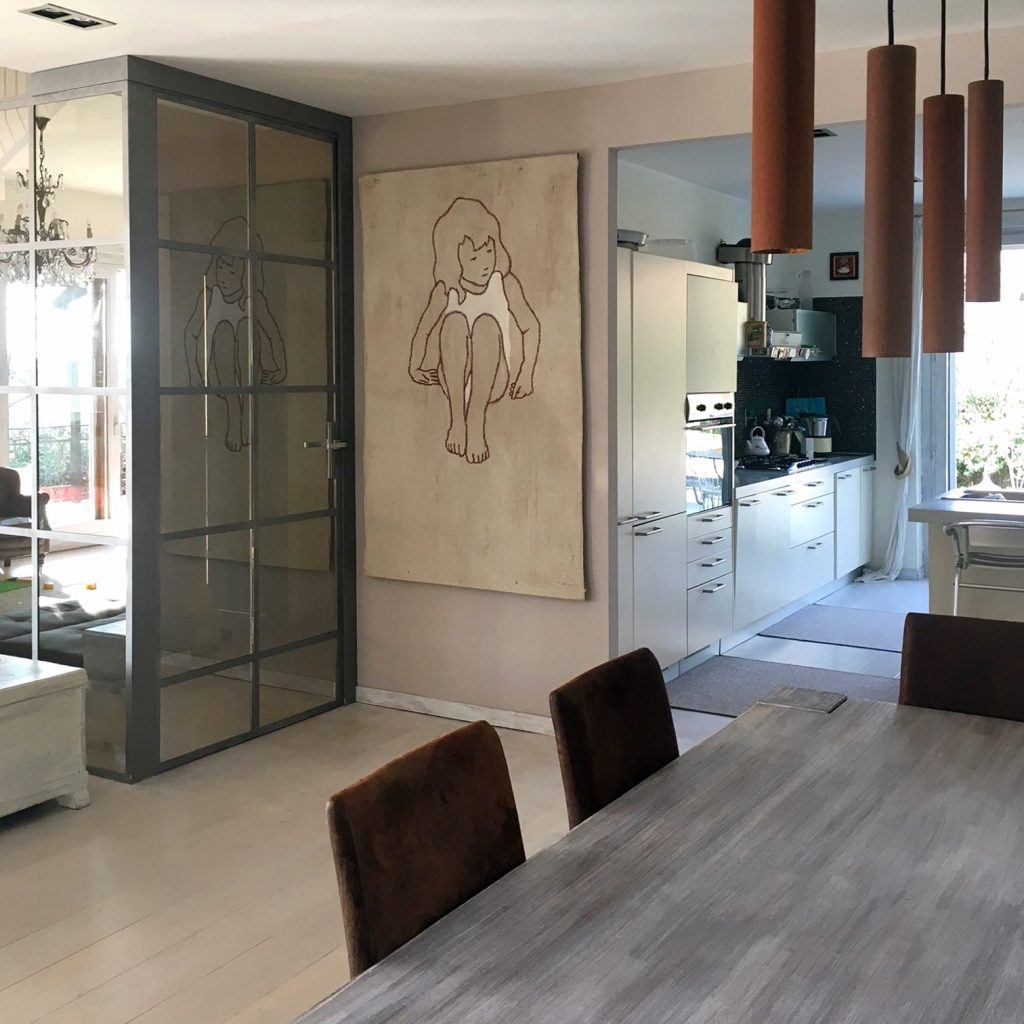Art for Interior Design

9 april 2022 – Reading time: 1 min
Art for Interior Design
To the present day, we have witnessed the widespread of art for interior design. The
number of architects and designers who reach out to art to offer their clients a prestigious artistic-cultural service of furnishing and decoration for their residential space is rapidly increasing. However, it is not easy to understand what role art plays in the valorisation of residential space and, consequently the correct use of artworks within a furnished space. We are discussing the topic with the gallery President, Marco Rossi gallerie Marco Rossi.
What role does art play in the interior design of living space, according to an art contemporary gallerist?
For its unique nature, art elevates the space in which placed. For a place that aims to
become unique and prestigious reflecting the client’s soul, having artworks displayed with certain criteria, bears much more value than a space without any art in it.
In my opinion, art for interior design has a relevant role as well as certain furnishing
elements that participate in the esthetic concept and interior design of a house. Actually, we can say art is the most important element of interior design: it conveys the client’s esthetic taste. Therefore, the artwork to be displayed in a space needs to be specifically selected and not just collocated. In this regard, the gallerist contributes lies in finding the most suitable shape to be able to interpret in the best way the space through the presence of the right artwork. That being said, the artwork has to reflect the esthetic vision and the artistic sensibility of the client, hence the selection of the artwork requires competence, knowledge and a valuable network grown in decades of experience in the art market. This goal cannot be successfully achieved without a discussion with an art world specialist.
How does the process of choosing an artwork for interior design work? Does it start from
the gallerist or the client?
Firstly, it is important to distinguish the type of client: there are clients and, collectors.
Collectors have a solid awareness of the art world or either a specific kind of artwork. In many cases they already have trusting relationships with their gallerists. In our case, it often happens that our most attached collectors choose to consult our gallerists for their renovation and refurbishing projects. In these cases, the discussion with architects and interior designers involved in the project is crucial to find the right solution that equally enhance the presence of artworks and space at the same time.
However, when we work with clients who are not into the contemporary art world, we
present them a world they don’t know, guiding them in the selection of an artwork that
reflects their own taste and their idea of beauty. Starting from the artist’s story, poetic and career, we engage with the client in a journey that begins from the artist’s concept up until the artwork is displayed on the wall of his house. The architects, who frequently introduce the client to our galleries, choose to make a journey that ends with the selection of the artwork to decorate the living space. This is a useful way to build up a personal relationship with the client and, through the discussion with the client and the architect, being able to select the best artwork.
Sometimes it can happen that the client has already acquired an artwork for a space. Inthose cases, the gallerist must offer his experience and, together with the architect, findingthe best artwork valorisation and therefore to the space that hosts it.
When we think about contemporary art and interior design, are we always considering luxurious residencies?
No, we don’t. Not every house or office where we install artworks are luxurious space. It is sure that throughout history a work of art has always been regarded as something expensive, precious and unique, sometimes a promising investment too. However, it is important to mark the fact that the current art market can offer prestigious solutions of artistic quality. The accessibility of the current prices for those who are professionals, small businessmen or art enthusiasts makes art also a good investment whose value will tend to increase over the years.